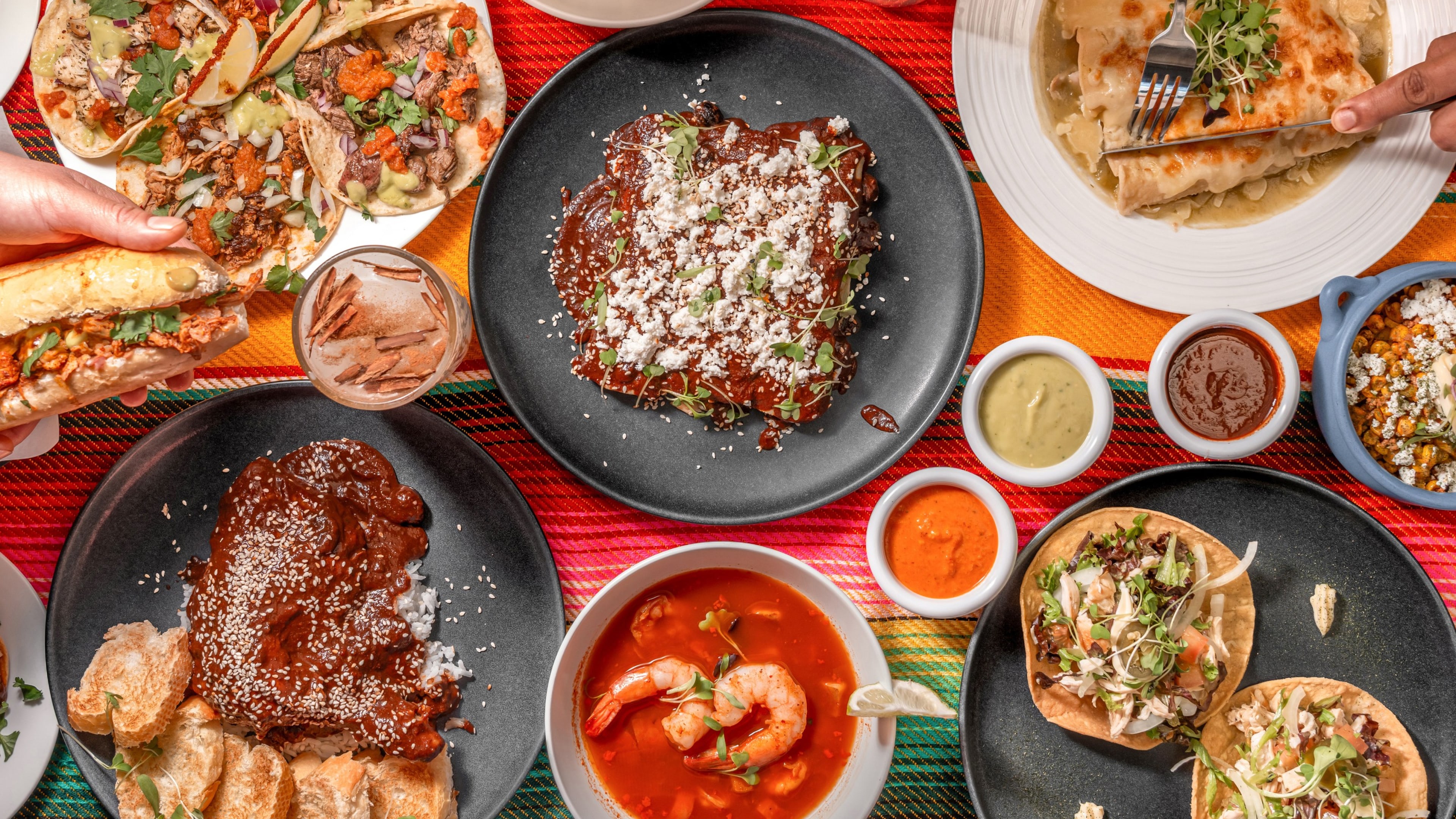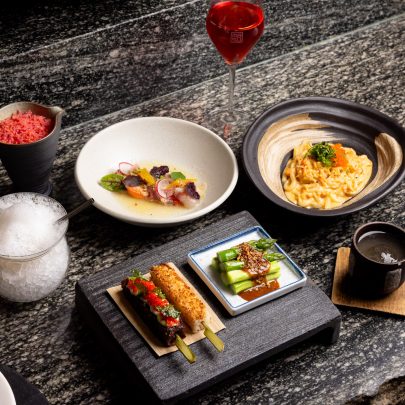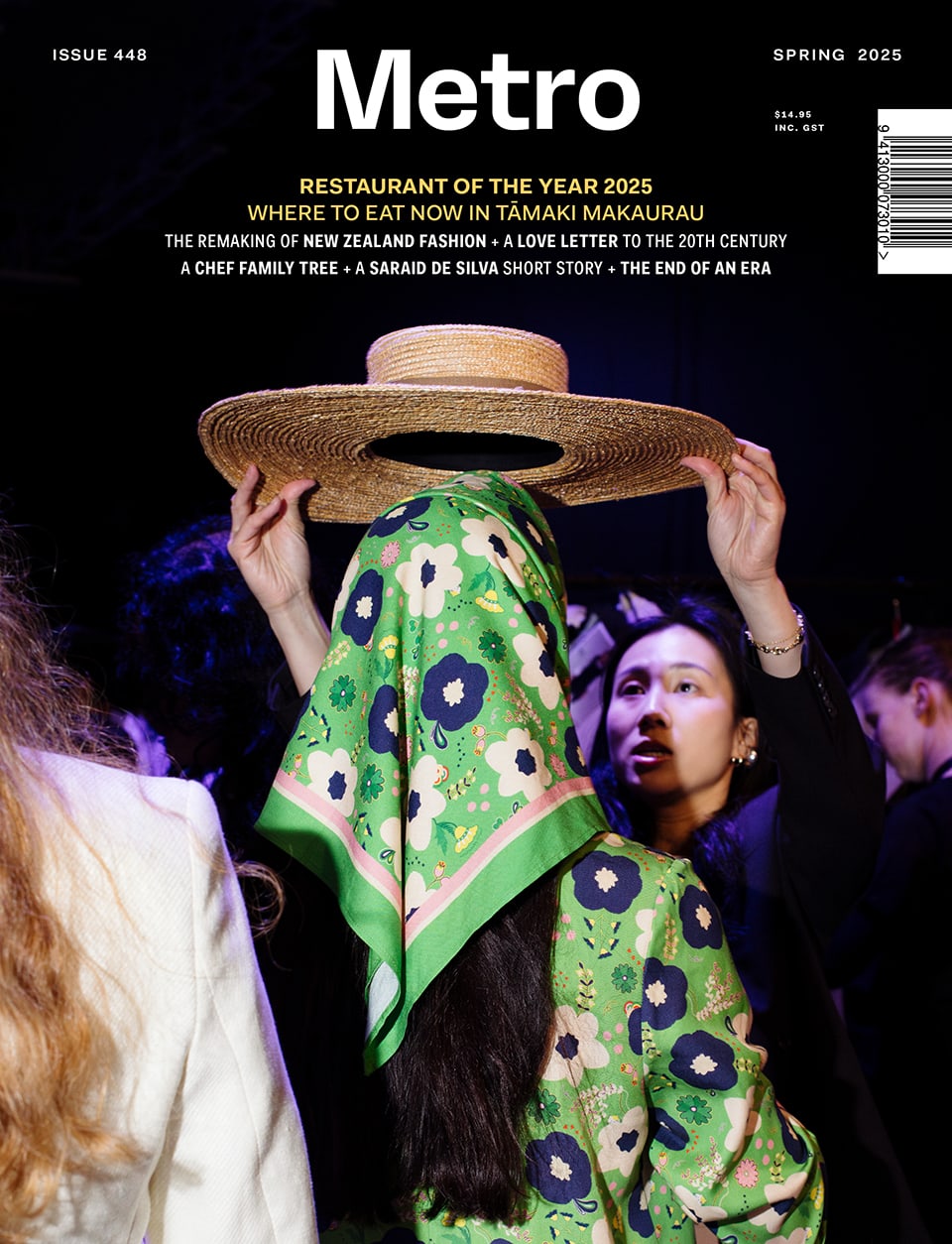Jul 21, 2025 Food
There are sauces, and then there is mole — that dense, complex, enigmatic, labour-intensive substance that exists in seemingly infinite variations. It is not so much a condiment as it is a record of history, culture and innovation. And like all the best dishes, its origins are tangled and fraught. Two states in Mexico — Puebla and Oaxaca — claim to be the birthplace of mole, but versions exist throughout the country.
One disputed legend (of many) says that the dish may have been the ‘divinely inspired’ improvisation of panicked 16th-century nuns, who, faced with the unannounced visit of an archbishop, cobbled together a concoction from various types of chillies, spices, old bread, nuts, chocolate and about 20 other ingredients they had on hand. Another tells of an auspicious gust of wind which swept a tray of spices into a pot of turkeys that were being cooked over the fire by a monk.
Behind the lore lies global history. It’s easy to think of mole as uniquely Mexican — and it is — but its whakapapa is unmistakably international. The dish we see today bears the traces of medieval Islamic cuisine, which was carried into Spain and then into colonial Mexico, where it mingled with Indigenous ingredients and culinary knowledge: cacao, chillies and pumpkin seeds; hand-ground sauce techniques; and the word mōlli itself, which is the Nahuatl word for sauce.
Now, mole has found its way to Karangahape Rd. At Sagrado Cantina, a new restaurant in St Kevins Arcade, they serve a particularly fascinating mole variant, mole negro — the most achromatic, brooding and revered of Oaxaca’s seven famous moles. Traditionally, the dish is built upon a smoky foundation of deeply toasted, almost incinerated chillies — typically chilhuacles negros; although, as these are immensely hard to find here, presumably an alternative like mulato or pasilla has been substituted in this localised rendition. Still, the result is transportive.
The dish bears little resemblance, in either appearance or flavour, to anything else you’re likely to eat in Tāmaki Makaurau: slow-cooked chicken thigh over rice, cloaked in this thick, inky sauce. (You can also ask for the mole over enchiladas.) It is rich, smoky and bittersweet, fragrant with warm spices — cinnamon, nutmeg, cloves and so on. The heat is gentle. And there’s a rounded, sticky, fruity sweetness to the whole thing. It tastes like a dish that took a lot of work and time to make. It just might be the only mole negro you can order in the city at the moment, but even if it weren’t, it would likely still be the best.
Before opening this brick-and-mortar joint, Sagrado was already a pretty singular operation. I first heard about the outfit and its proprietors when they were Sagrado Taqueria, a fixture on the night market circuit that had racked up many, many loyal fans. Jorge and Andrea, who are both from Mexico, opened this market incarnation last year, with a focus on tacos that were meticulously made, faithful to tradition and served relaxedly on paper plates. Now, they join a procession of eateries — Phở Yến, Tokos Tacos , Baby G Burger , among others — that have transitioned from temporary stalls to permanent restaurants.
Their new home is crammed into the old Acho’s (then Underground Bistro, then, most recently, Sunday Burrito) space in the arcade. The kitchen takes up most of the shop, so the tables you eat at are scattered outside in the communal mezzanine. When the neighbouring restaurants are humming, it’s an especially good place to sit.
Sagrado does seven types of tacos, which are all mix-and-matchable and listed alongside other masa and bread-based offerings — tortas, volcanes, flour tortillas. Tacos arrive in fresh, just-kissed-by-the-flame corn tortillas.
When the Sagrado “lamb birria and consome” taco arrives, with a light, clarified dish of consommé on the side — but no fried shell and no sight of cheese — it might surprise those Auckland diners who are well-acquainted with intense beef-and-cheese birria (or quesabirria), which are dunked into a thick pool of gravy and have tended to dominate taco hype in this city. The dish here is a purer iteration, more closely akin to the Western Mexican definition of birria — a type of stew usually made with goat or lamb — and it is a very nice thing to eat. Even better, though, is the perfectly fatty pork-belly carnitas. The condiments are important here, too, particularly the house-made arbol chilli salsa, which arrives frothy, citrus-bright and laced with scorched alliums. It’s pungently hot, so go easy.
Masa appears in other forms, too — like tostadas, which are used as vessels for great big piles of chicken salpicón, a cold shredded chicken salad. This version is heavily flecked with oregano and also wincingly sour thanks to the jalapeño vinegar, which is defanged slightly by the appearance of Kewpie mayo. It is a thoroughly messy and acidic thing to eat — which is part of what makes it so much fun.
Esquites, the street corn salad that we are happily seeing ever more regularly around the city, was glorious: toasted corn kernels slicked with a rich chorizo-infused oil, dotted with globules of Kewpie mayo (again) and a scattering of goat’s cheese. I’d have preferred less mayonnaise and more cheese, but even so, it was very, very good. Then there’s the shrimp consommé — an $8 bowl of concentrated prawn essence. It is spicy, smoky and surprisingly substantial with its bits of potato and carrot and a trio of actual prawns bobbing at the centre.
There’s no liquor licence at Sagrado Cantina, yet. Jorges promises that margaritas, and in fact, anything they can add tequila to, will be coming soon — but for now the drinks are limited to horchata, agua fresca and canned soft drinks.
Sagrado Cantina isn’t a flashy place, and it doesn’t seem especially concerned with hype. There are trinkets and personal mementos on the walls, family in the kitchen, used cookbooks on the shelves, kitschy little salt shakers on the tables. The dishes, and yes, the sauces, are rich, not just in flavour but also in technique, memory and tradition. It is food that feels grounded in its origins, despite being made so far from where it began. You won’t find cooking like this anywhere else in the city.
SAGRADO CANTINA ****
183 Karangahape Rd, central city
@sagradocantina
Wheelchair accessible
Tues–Sat 12–9.30pm
Sun 12–9pm
Dinner Bill
Smaller plates $7–$15
Larger plates $15–$27
Dessert $15





